What is fun? 5 virtual and augmented reality devices tested
Harsh reality or the best time ever?
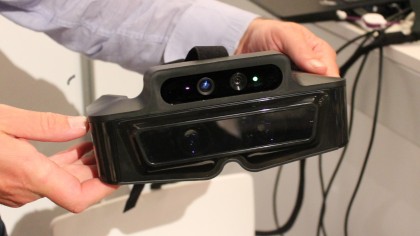
Introduction
Having fun doesn't exactly require a manual: drinking with friends, rocking out at concerts and eating your body weight in ice cream are fine examples of activities that fit the bill. But when it comes to VR, things are not so clear, judging by comments made by several executives and designers in the gaming industry recently.
The first came from Nintendo of America president Reggie Fils-AIme, who told Polygon that the company wouldn't be jumping into VR because, "it's not fun, and it's not social. It's just tech." Unity Technologies CEO (and former EA boss) John Riccitiello half-agreed, telling TechRadar that the VR challenge lies in finding out what people find fun, something he believes won't happen until the majority of people have the beefy hardware necessary to power headsets and games.
I set out to Unity's annual developer conference in Amsterdam, Unite 2015, to sample an eclectic mix of VR and AR hardware running games and software powered by the Unity engine. The question is: which ones brought the fun factor? Click ahead to find out.
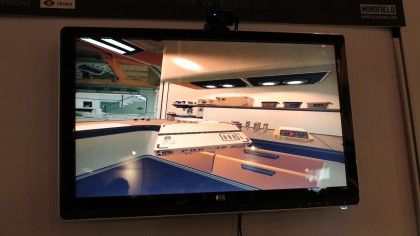
1. Oculus Rift
The heavyweight contender of the VR world, Facebook's Oculus Rift was being used to demo an atmospheric first-person exploration game called Pollen. In development by Finland-based MindField games, it was way more fun than walking slowly around a barren (but very pretty) spaceship has any right to be.
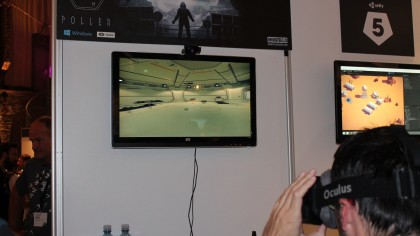
Putting on the Rift and zoning out with a pair of earphones was like stepping into another world where objects can be picked up, observed, rotated, shaken and thrown. After getting to grips with the controls (an Xbox One pad is used to walk around), I quickly became preoccupied with turning toasters upside down and throwing salt shakers into a sink, much to the annoyance of the programmer giving me the walkthrough.
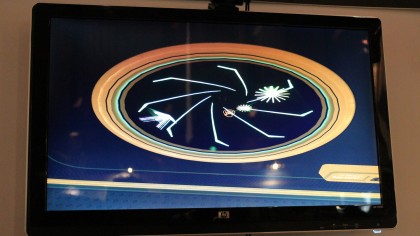
In five minutes, I'd managed to beat my high score on an arcade game embedded into the ship's wall, took photographs of kitchen appliances (and then threw the Polaroids into the sink for good measure), inserted a film reel into a wall projector to watch a minute-long movie and read an electronic newspaper on the wall. The immersion was so great that I almost fell off the chair walking down some steps in the game. They were high steps, OK?
I'm not too sure whether Pollen was truly fun, or just novel, but I know this: I can't wait to return.
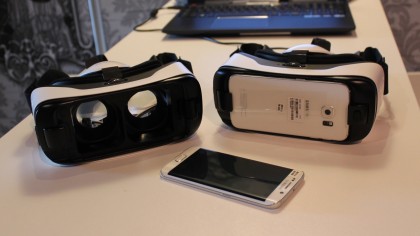
2. Samsung Gear VR
More of a tech demo than a game, Brazil-based Black River Studios' Rococo was being used to show off the Samsung Gear VR's abilities. Running on a Samsung Galaxy S6, it plunged me into a black and white, silhouette-filled mansion, one inspired by 18th century art, according to the app's programmers.
Rococo wasn't interactive (you could only look around), which sees it instantly lose points on the TechRadar fun-om-eter, but its unique visual style showed that you won't have to splash out thousands of pounds or dollars on a VR headset to get a visually impressive, immersive experience. Affordable VR is highly likely to be even more popular than the expensive PC stuff – just look at the popularity of mobile gaming if you're in doubt.
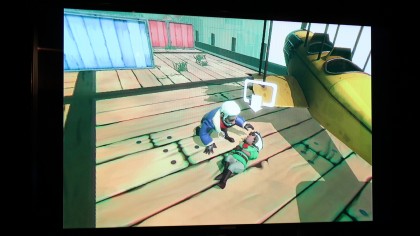
3. Project Morpheus
The queue for Sony's demo tent rarely dipped below 10 people across two days, meaning either A.) cakes were being given away for free or B.) its Project Morpheus VR headset was bringing all the fun to the party. The demo in question was of Wayward Sky, a "point-and-look" adventure game set aboard a floating ship inhabited by swathes of stressed-out chickens.
Seeing the world through the eyes of its protagonist, Bess, I was mainly tasked with looking around while pressing a button on the PS4 controller to perform actions. These included turning wheels, interacting with puzzle elements or guiding said airborne poultry through the skies.
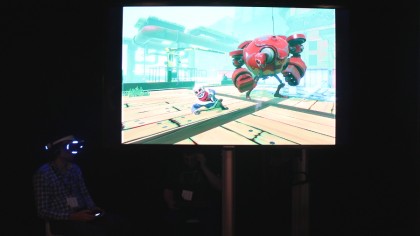
The camera switched between first and third-person view depending on the scene, and unsurprisingly, the first-person views impressed the most. The ability to view a 360-degree environment by looking around to spot clues and interact with what's around you could breathe life into a genre that died out years ago with games like Monkey Island, Broken Sword and Grim Fandango.
On the downside, picking out points of interest using a centralized crosshair and the PS4 pad felt a bit clunky. This would no doubt be improved by giving the player a PS Move controller to wield instead.

4. Meta VR
Meta describes its AR headset as "the most advanced augmented reality interface" available, which may well be true – it's not like there's many of them around. More importantly, the company claims that its device can turn you into a "real-life Tony Stark", which is about as accurate as saying that sticking a papier-mâché balloon to your chest equips you with a convincing Ion Cannon.
Though it's a bit bulky and not particularly comfortable, to be fair to the Meta 1 Developer Kit (which is a work in progress), it could have huge potential once developers get to grips with it. After adjusting two lenses behind the visor to focus properly, a 2D, square-shaped interface was beamed in front of me into the air.
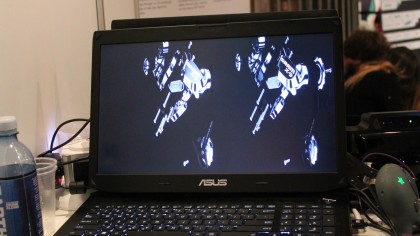
The first demo saw asteroids shot into the void. I could destroy them by holding my hand out and pointing at them, which was made slightly awkward by lag and and a narrow field of view – the square interface felt pretty small set against the huge venue wall in the background.
In another demo, I grabbed a satellite out of the sky, turned my head and placed it on the floor between my feet, effectively turning the real world into a massive desktop. A third demo let me reach out and grab a car engine to see its different parts which, while novel, was lightyears away from being mind-blowing.
According to Steven Feiner, Lead Advisor on Meta, developers have also created a finger-guided maze game to help give people physical therapy on their shoulders, while another sends Meta wearers out into the streets to find digital objects as they were going on in a sort of VR treasure hunt, which sounds about a billion times more fun than than tickling 2D asteroids at the end of my nose.
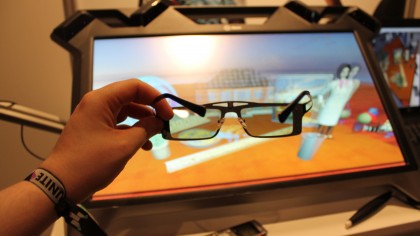
5. zSpace Real World Virtual Reality
Fun isn't all about headsets, or even gaming for that matter – as zSpace's innovative AR platform showed. After donning a funky (yet comfortable) pair of stereoscopic glasses and being handed a fat laser-pointing pen, I was able to to pick up any object in the virtual working space in front of me. Like a virtual tractor beam, I was able to manipulate Scrabble tiles, a ruler, cylinders and other objects, twirling them around to see through them and placing them on top of other objects.
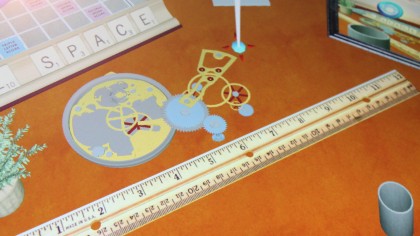
Powered by AMD's professional-grade FirePro graphics, the platform is geared toward virtual learning but could be also applied to games, according to zSpace. Interactive learning is a growing trend in education, with devices like HP's Sprout showing that getting hands-on is far more engaging than having students sit down with a pen and paper. I found zSpace's offering even more intriguing and far more fun than using a keyboard and mouse – and especially paper.
